Mission Day 722: 15:05 hours
Ganymede Base mining station
Second Shift
I walked over to the shuttle bay and surveyed the damage. Everything was blown to bits and the bay was almost completely cleaned out. Debris from the drums, lights, repair dock and most of the tools littered the floor. The refueling tanks had blown out one entire wall of the bay and the back into the lab. The only tool that still seemed to be functioning was a welding plasma torch, which I nabbed and clipped to my suit.
Aside from that, the only other thing that was intact was the new rover, which had been secured and covered with a tarp—which was still there, but had some tears in it. I unscrewed the tarp from its moorings, and uncovered the rover to see if it was serviceable. Checking it over, I saw that it was still brand new from the factory. My space suit’s computer beeped at me that power levels were critical. “Power levels ten percent.”
The tires were clean, and had good, strong treads on them. A brand new rover. It had been intended for survey work, and we were not supposed to take it out until after Biggs and I had had a chance to initialize it. No one to stop me now. The initialization routine was simple enough, even in a spacesuit. I powered the rover up, and it responded to my commands as it should. It was ready to go.
With its fully charged nickel/hydride batteries, it had far more run time in it than my suit did. This gave me some initial hope, but when I realized there was no way to couple the power supply from the rover to my suit, I backed it out of the bay, and on my way out, I made sure that the toolkit and emergency medikit were on board. I also grabbed a piece of rebar debris as a weapon—although it didn’t make sense, it made me feel more secure. I was alone on this rock now.
There was a bright flash from Jupiter. That clinched it. The gas giant had vacuumed up another comet. I watched the astronomical oddity for a bit, and away I went. Driving the rover felt mischievous, as it was such a smooth ride and it was off limits. Because the micro-gravity on Ganymede—slightly less even than that of Luna, and due to the long stretches of flat plains on this side of the moon—I was able to go at much faster speeds than I expected. I flipped on the navigation system, just for the hell of it.
There were no satellites orbiting Ganymede, so no GPS, but there was a tracking system for detecting the survey stations that we were in the process of setting up when the accident occurred. Again, my suit reminded me that power levels were reaching critical. “Power levels seven percent.”
I thought about the environmental conditions on Ganymede as I drove the rover. My mind was wandering as I was. The Jovian year is about 12 Earth years…so the terminator moves, albeit slowly. And Ganymede has a magnetic field of its own, which protects it from some of the raw cosmic and solar radiation, but not completely from all the still poorly-understood fire that giant Jupiter spat out at us. How can a planet produce more energy than it receives from the sun? This question has still not been answered in centuries of research.
While Ganymede has no real atmosphere to speak of, its exosphere has moderate amounts of oxygen and ozone, which was among the reasons that it was selected for terraforming. It was easy to mine ice from its surface, which gave us abundant water to drink, cook, wash and water the hydroponic gardens with—and some to store. When the sunlight hits Ganymede’s surface, ozone is generated, which helps protect its surface from radiation. This is a continuous process. The blowers that we set up shot oxygen atoms into the ozone, where they combined to form more oxygen, which falls back down to the surface—albeit slowly.
The blowers mined hydrogen for fuel and oxygen out of the surface, and the drills produced helium-3 and other raw materials for our work. One of the few things we had to continually bring from Earth was topsoil, as we needed it. This far deep in the system, vegetarianism was a convention. There just wasn’t room to keep live animals, much less what they would need to survive. What little meat we got came in dried form, or in tubes as a paste.
Suddenly, a blip showed up on the navigation system that shouldn’t have been there. It showed a large installation due Ganymedean East of my present location! This had to be a mistake… or… was it? An alien base, monitoring our installation? Perhaps the Company had another terraforming station set up separate from ours? But why would they keep it a secret? It made no sense. Whatever this thing was, it was not only within the range of the rover, but less than half an hour away—which gave me a chance to lay eyes on it before I died. I was determined to see what the hell it was. “Power levels five percent”. Damn, it was getting cold in the suit.
A long, hell-bent-for-leather drive across the plains of a Jovian moon made my heart race. Steering around a few craters, I took some big bounces along the way that would have been death-defying on Earth. Catching 100 feet of air on an airless moon pumps you full of adrenaline when you realize that each bounce could be your last. The feeling of vertigo I was used to just looking up at Jupiter—which always seemed somehow like looking down—was intensified at the apex of these long, careening bounces. Presently I arrived at the location that the navigation system said should be there, but saw nothing. I drove around a bit, looking at the ground, and then I saw it. A dark, inconsistent obelisk jutted up from the surface. The heads-up display in my helmet dimmed, and went nearly dark. “Power levels critically low in suit,” the computer voice said. I ignored it, focused on the obelisk. I couldn’t believe my eyes.
No, wait, there was the top of an elevator shaft poking out of the ground, just big enough for a human to enter. It wasn’t supposed to be there. It couldn’t be there. I drove up to it and parked the rover. The shaft looked brand new, of gleaming metal. There was a keypad on the right side of two doors. And I didn’t know the code.
I grabbed the piece of rebar I’d brought, and banged on the doors—maybe someone would hear. I couldn’t believe my luck. There’s got to be somebody in there. I looked at the power gauge—down to 3%. I had to get in; it was now or never. I had five minutes or less before my suit’s power pack failed and then it would get real cold in here real fast.
Think. How to open secured mag-locked doors without a code? I remembered from the Space Corps training that Io's volcanoes give off particles of sulfur and sodium that are ionized by Jupiter's magnetic field, and the Io plasma torus around its orbit is so radioactive that any unprotected human there would almost immediately be exposed to a lethal dose of radiation. These particles make it over to Ganymede, not only through the natural migration of the Jovian system, but also clinging on to the ships that occasionally go back and forth. We had to scrub down in the airlocks before going in or out of a ship. Mostly these days, robots automatically handled the cargo.
So these doors must be radiation shielded as well as code-locked. Four minutes. Necessity really is the mother of invention. I wasn’t going to be using the rover again—not anytime soon, anyway—so I grabbed the repair kit and flung it open to see what I could use to get that damn keypad to open the doors. Tape, battery acid, various metals, lengths of wire… and then it hit me. Brute force.
I went to the keypad and put the rebar up against it. I couldn’t fit either end in, so I gave it a good whack and nothing happened. Whack. Whack. Each time, it lifted me off the surface a little, and I landed again. This was getting me nowhere. I wasn’t even making a scratch in the chrome of the keypad. Three minutes.
The jack. Even on Ganymede, the rover would occasionally need to have its tires changed. I flounced to the repair kit and pulled out the jack. It had a tire tool, much like the ones used on Earth, with a wedge end. I’d be able to fit it in between the control pad and its housing. I flounced back over to the elevator and tried the tire tool’s flat end inbetween the two. It fit as if it were made for the task. Gripping it near the bottom in case I struck my suit, I braced myself and smacked the rebar against the top end of the tire tool. It made no sound, but I could feel the tire tool give a bit. Two minutes.
Again. This time, the pad came off and floated away, spinning wildly like a playing card thrown at a wastebasket. Exposed, the inner control mechanism of the pad looked like a fishnet stocking made out of gold, platinum and extruded copper. Electronic leads were sticking out that looked like they might control the doors and the radiation shielding. One minute.
Assuming this radiation shielding was of the ALARP variety (As Low As Reasonably Practicable), I guessed that the doors were protected not only by sheet lead, various levels of Mylar mesh and other neutron-repelling materials, but also by a strong EMF, likely a plasma. I had to short out the system long enough to get in without damaging it, if at all possible. I’d have to drain the rover’s battery to get in. But it was life or death. It didn’t matter.
Using the tire tool, I unhooked the one of the rover’s batteries and pulled it away from the bracket. Using the lengths of wire from the repair kit, I wrapped them around the terminals and attached one pole to the longer of the two leads in the exposed keypad housing. I set the battery on the ground, being careful not to lose the connection, and wrapped another length of wire around the other pole’s terminal. I realized that what I was about to do could very well kill me—but I was a dead man anyway.
“Power levels in this suit have reached critical. Shutting down.” The rest of my suit’s lights dimmed out, and turned off. The whir of the heating fan slowed, and stopped. This was it. Body heat wouldn’t last long now. I had never been this cold. I grabbed the other length of wire and touched it to the only other obvious lead in the keypad’s exposed socket. A massive spark came not from the socket, but from the doors of the elevator, which opened a few inches. I could see the sputtering plasma field trying to kick in. I probably only had seconds to get inside, and I was already feeling arctic cold setting in.
Grabbing the tire tool, I flounced to the doors and wedged one foot between them. Using both hands, I pushed against the doors in an effort to get them to open wider. They were trying to close. I was in a panic. Turning, I put my back against one door and used the tire tool to push against the other as hard as I could. In one-seventh gravity, this is a tricky feat at best. With one last Herculean effort, I fell into the elevator, the plasma field sputtered back into life, the doors closed and I suddenly felt myself going down. I was enveloped in a new kind of darkness.
I could already feel it getting warmer. Someone was here. There would be power. Oxygen. Safety. I was going to live. Even without food, there was enough recyclable water in my suit to last until Friday. Surely I’d be able to survive until then. Down, in complete blackness, I rode the elevator car. I cracked a smile inside my suit. I was going to make it.

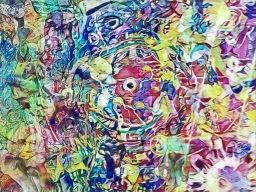
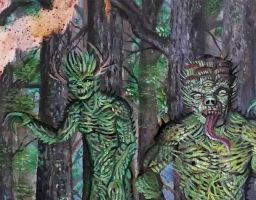


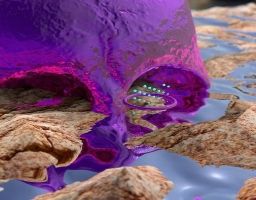
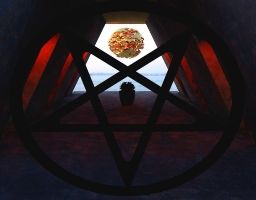




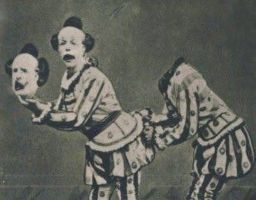
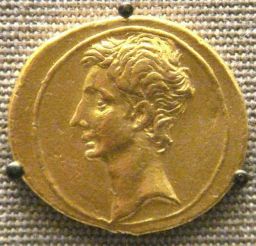



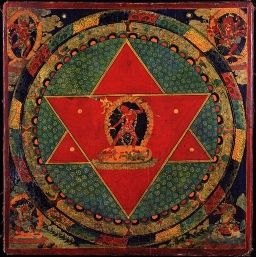
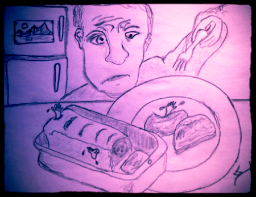
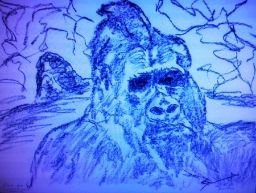

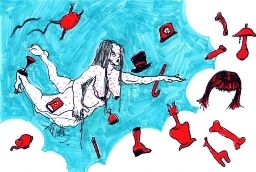

Wow. I'm telling all my friends to sign up via email to get MORE quality SF and Fantasy from the Freezine! Wait until they hear about this!
ReplyDelete